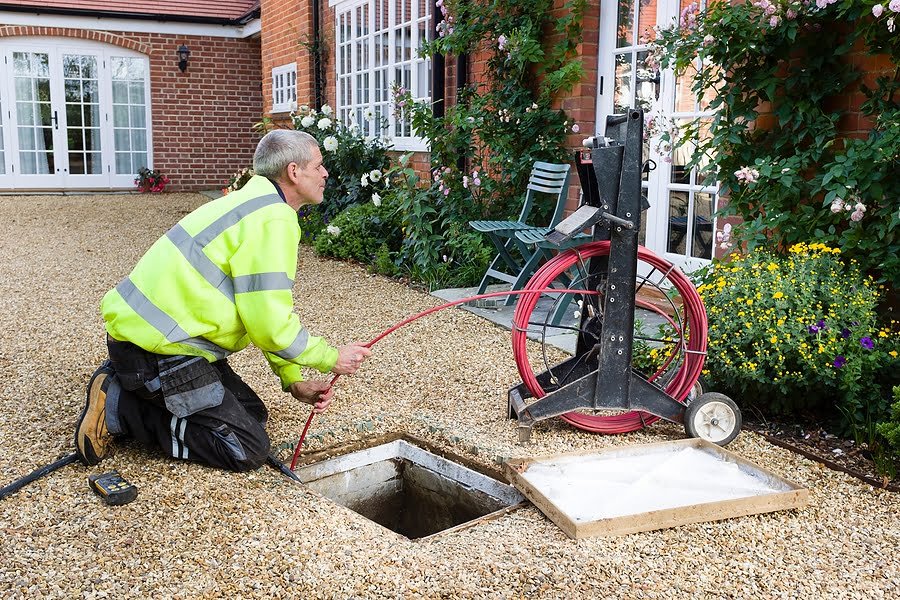When it comes to home improvement, most people focus on aesthetics—fresh coats of paint, new furniture, or updated fixtures. However, there is one crucial aspect of your home that often goes overlooked: the sewer and plumbing system. While these systems may not have the immediate visual appeal of a modern kitchen or a stylish living room, they play a fundamental role in ensuring the safety, comfort, and longevity of your home. An efficient and well-maintained sewer system can make a world of difference, not only in preventing costly repairs but also in improving the overall functionality of your home. This article will explore how you can enhance your home by focusing on sewer systems and installation upgrades, covering both the practical and long-term benefits of these improvements.
The Importance of a Well-Maintained Sewer System
A home’s sewer system is responsible for removing wastewater from your property. Over time, pipes can become clogged, corroded, or even break down entirely, leading to unpleasant issues such as foul odors, slow drainage, and, in worst-case scenarios, sewage backups. These problems can cause significant damage to your home, both structurally and aesthetically. By proactively improving and maintaining your sewer system, you can avoid these potential disasters.
Beyond mere functionality, a well-maintained sewer system can also improve your home’s value. Prospective buyers are likely to appreciate the peace of mind that comes with knowing the plumbing infrastructure is in good condition. In fact, addressing plumbing issues early on can be one of the most cost-effective improvements you make to your home, saving you from extensive repairs or replacement work in the future.
Assessing Your Sewer System
Before embarking on any major sewer improvements, it’s important to assess the current state of your system. Sewer issues are often hidden beneath the surface, making it difficult for homeowners to identify problems without professional inspection. A plumber can perform a comprehensive assessment of your sewer lines, often utilizing advanced tools like video inspection cameras to get a clear picture of the system’s condition.
The most common sewer-related issues include:
-
Clogs and Blockages: Over time, debris, grease, and tree roots can accumulate in your pipes, causing blockages. Regular maintenance, such as drain cleaning, can prevent these issues from escalating into more severe problems.
-
Corrosion and Leaks: Older sewer pipes, particularly those made of clay or cast iron, are susceptible to corrosion and leaks. Replacing outdated pipes with modern materials, such as PVC, can significantly reduce the risk of these issues.
-
Tree Root Intrusion: Tree roots naturally seek out water sources, and they can invade sewer pipes, leading to cracks and blockages. Regular inspections can detect root intrusion early, allowing for timely interventions.
Upgrading Your Sewer System
Once you’ve identified the state of your sewer system, it’s time to consider upgrading. There are several options available depending on the severity of the issues you’ve discovered and your overall goals. Here are some of the most effective ways to improve your sewer system:
1. Pipe Replacement
If your home has older pipes that are prone to corrosion or damage, replacing them with modern materials is one of the best upgrades you can make. PVC and HDPE pipes, for example, are durable, resistant to corrosion, and offer a much longer lifespan than older materials. This upgrade not only prevents leaks and blockages but also increases the overall efficiency of your plumbing system.
2. Trenchless Sewer Line Replacement
For those who want to avoid the mess and disruption of digging up their yard, trenchless sewer line replacement is a revolutionary solution. This technique involves creating small access points at either end of the sewer line and using specialized equipment to pull a new pipe through the old one. Trenchless methods are less invasive, quicker, and often more cost-effective than traditional excavation, making them an attractive option for homeowners seeking an upgrade.
3. Sewer Line Repair
In some cases, your sewer system may not require full replacement but could benefit from targeted repairs. If you’ve discovered a small crack or minor issue, sewer line repair can be an efficient and affordable way to restore function. Techniques such as pipe relining—where a new liner is inserted into the old pipe to create a durable, leak-proof barrier—can often extend the life of your sewer system without the need for complete replacement.
4. Regular Drain Cleaning
Another effective way to maintain a healthy sewer system is by scheduling regular drain cleaning. This helps to prevent build-ups of grease, soap scum, and other debris that can clog your pipes over time. Professional drain cleaning services use specialized equipment like hydro-jetting to blast away blockages, ensuring your pipes remain clear and free-flowing.
5. Backflow Prevention Installation
Sewer backups can lead to costly and unsanitary messes. Installing a backflow prevention valve can protect your home from sewage backups, especially in areas prone to flooding. This device prevents wastewater from flowing back into your home’s pipes, ensuring that your plumbing system remains functional even during heavy rainfall or other external pressures.
6. Tree Root Barriers
If you live in an area with mature trees, you may be at risk for root intrusion into your sewer pipes. Installing root barriers around your sewer lines can prevent tree roots from invading and causing damage. These barriers are typically made from durable materials like plastic or concrete and are designed to redirect the growth of roots away from the pipes.
The Benefits of Sewer and Installation Upgrades
Investing in sewer and plumbing upgrades can bring a range of benefits to your home. Here are some key advantages:
-
Preventing Costly Repairs: By addressing sewer issues before they escalate, you can avoid the high costs of major repairs or replacements.
-
Improving Health and Safety: Sewer backups and leaks can lead to health hazards such as mold, bacteria, and foul odors. A properly functioning sewer system helps maintain a safe, clean environment for your family.
-
Increasing Home Value: A home with an updated sewer system is more attractive to buyers. Buyers are likely to pay more for a property with a well-maintained plumbing system, which can increase the resale value of your home.
-
Peace of Mind: Knowing that your sewer system is in top condition gives you peace of mind, allowing you to focus on other areas of home improvement or simply enjoy your home without worrying about plumbing emergencies.
Conclusion
While sewer systems and plumbing may not have the same immediate appeal as more visible home improvements, their role in your home’s overall function and value cannot be overstated. By upgrading your sewer system through proactive maintenance, pipe replacement, or modern repair techniques, you can prevent costly issues, improve your home’s value, and ensure a safer living environment. In the long run, investing in your sewer system is an investment in the long-term health and functionality of your home. Whether you choose to tackle these upgrades on your own or hire a professional plumber, taking care of your home’s plumbing infrastructure will undoubtedly pay dividends for years to come.

